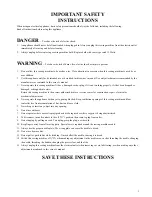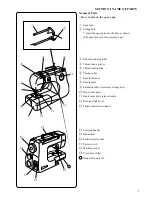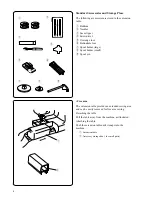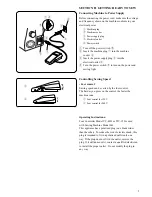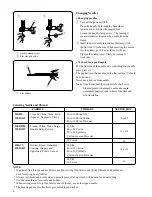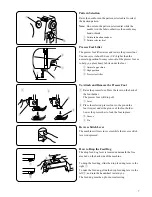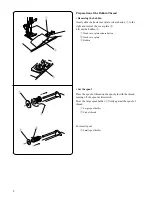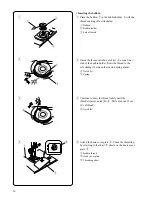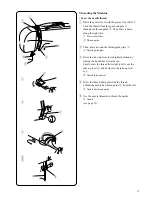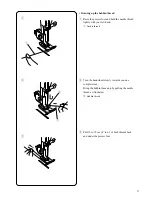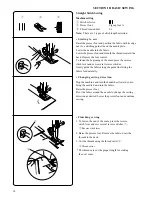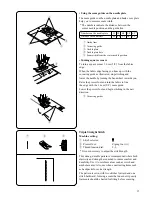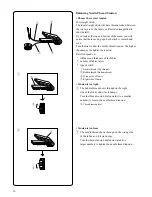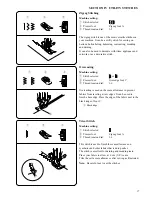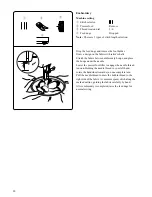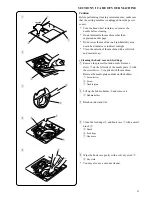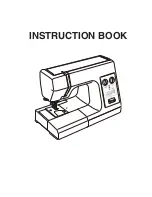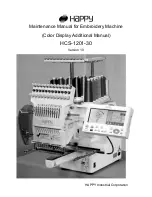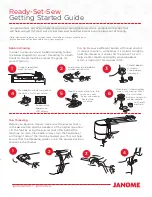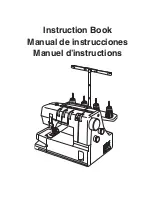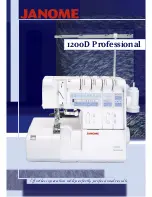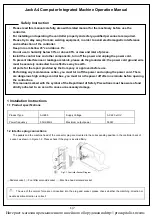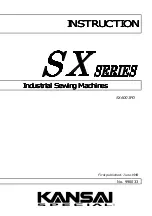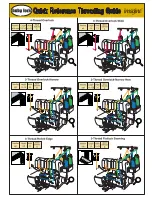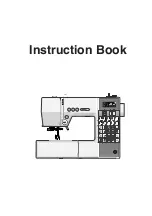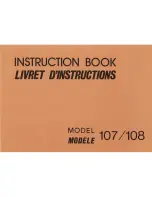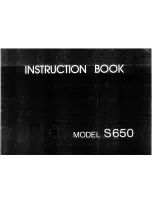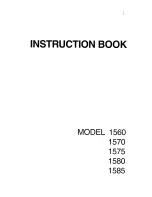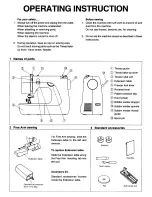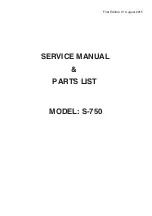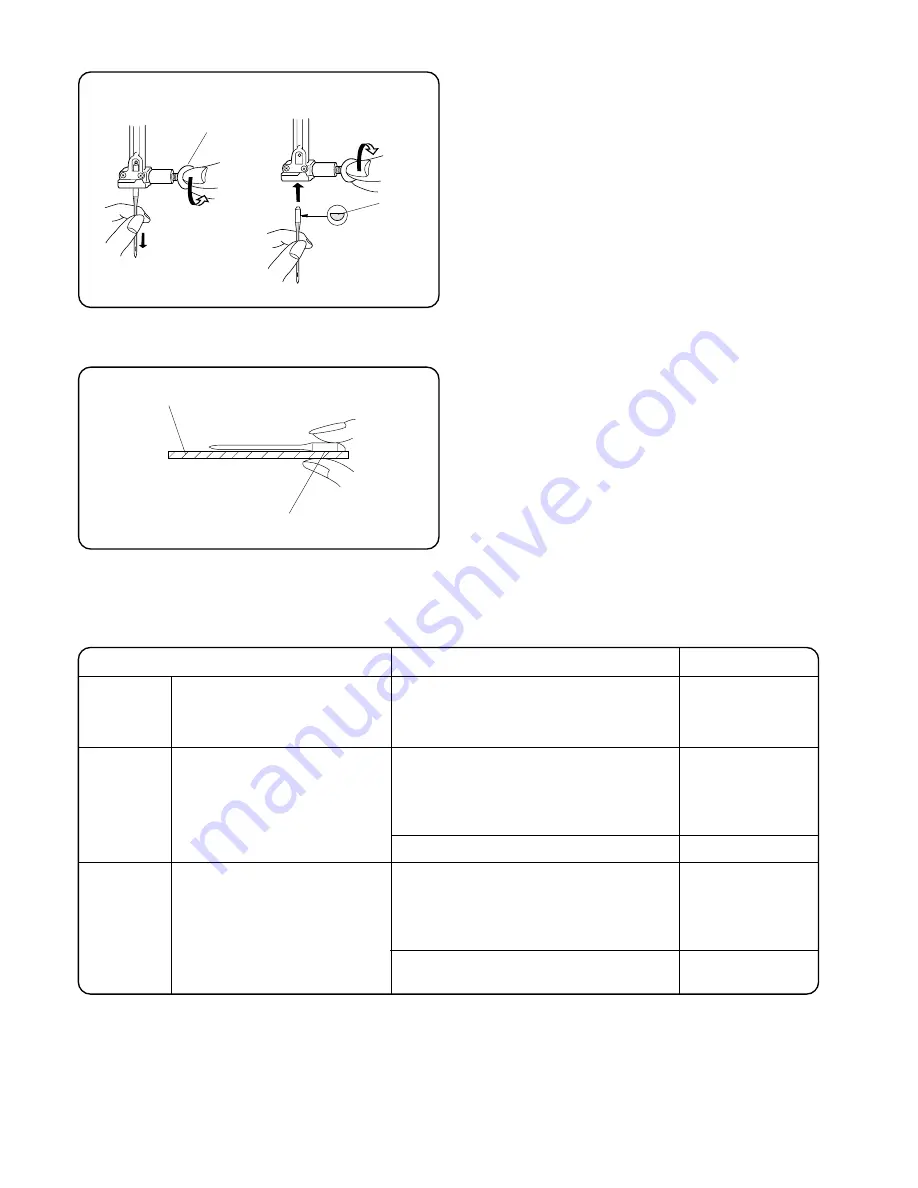
6
z
x
q
Changing Needles
• Changing needles
z
Turn off the power switch.
Raise the needle by turning the handwheel
towards you and lower the presser foot.
Loosen the needle clamp screw
q
by turning it
counterclockwise. Remove the needle from the
clamp.
x
Insert the new needle into the needle clamp with
the flat side
w
to the rear. When inserting the needle
into the clamp, push it up as far as it will go.
Tighten the clamp screw firmly by turning it
clockwise.
• To check for a good needle
Put the flat side of the needle onto something flat (needle
plate, glass etc.).
The gap between the needle and the flat surface
e
should
be consistent.
Never use a bent or blunt needle.
Note:
Check your needles frequently for barbed or
blunted points. A damaged needle can cause
permanent snaps or runs in knits, fine silks and
silk-like-fabric.
NOTE:
* In general, fine threads and needles are used for sewing thin fabrics, and thicker threads and needles are
used for sewing heavy fabrics.
* Always test thread and needle size on a small piece of fabric which will be used for actual sewing.
* Use the same thread for needle and bobbin.
* When sewing stretch, very fine fabrics and synthetics, use a blue tipped needle.
* The blue tipped needle effectively prevents skipped stitches.
Selecting Needle and Thread
FABRICS
THREADS
NEEDLE SIZE
LIGHT
WEIGHT
MEDIUM
WEIGHT
HEAVY
WEIGHT
Crepe de Chine, Voile, Lawn,
Organdy, Georgette, Tricot
Linens, Cotton, Pique, Serge,
Double Knits, Percale
Denim, Tweed, Gabardine,
Coating, Drapery and
Upholstery Fabric, Canvas
9 or 11
11 or 14
14
14 or 16
16
80 to 100 Fine Silk
80 to 100 Fine Cotton
80 to 100 Fine Polyester
50 Silk
60 to 80 Cotton
50 to 80 Synthetic
Cotton-covered Polyester
50 Cotton
50 Silk
40 to 50 Cotton
40 to 50 Synthetic
Cotton-covered Polyester
30 Silk
30 Cotton
w
q
Needle clamp screw
w
Flat side of needle
e
Flat surface
e
w
Summary of Contents for Sewing Machine
Page 24: ......

